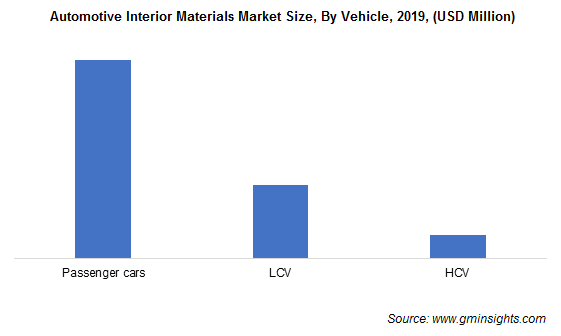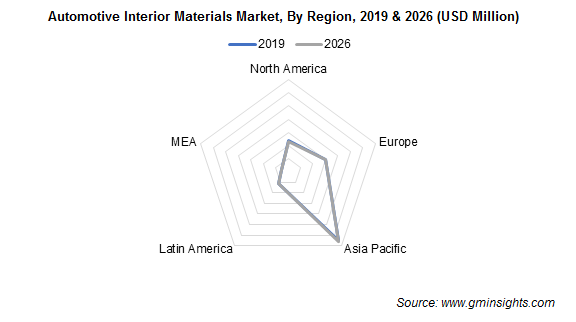Get a free sample of Automotive Interior Materials Market
Thank you!
Your inquiry has been received. Our team will reach out to you with the required details via email. To ensure that you don't miss their response, kindly remember to check your spam folder as well!
Form submitted successfully!
Error submitting form. Please try again.
Get a free sample of Automotive Interior Materials Market
Thank you!
Your inquiry has been received. Our team will reach out to you with the required details via email. To ensure that you don't miss their response, kindly remember to check your spam folder as well!
Form submitted successfully!
Error submitting form. Please try again.
Automotive Interior Materials Market Analysis
Plastic material segment will generate more than USD 20 billion revenue by 2026 owing to its favorable capabilities and the vast chemical know-how of the material. Plastic is amongst the most researched materials and has gained mutual adoption in the automotive industry due to its good mechanical properties combined with excellent aesthetical appearance. With clever interior placements and improvements in manufacturing capabilities, the material witnessed a rapid growth and gained the second position amongst the most common class of materials used in vehicle manufacturing next to ferrous metals.
Seats application segment will account for over 30% automotive interior materials market share by 2026. Seats are of considerable importance as they mitigate driver discomfort during long drives or bad driving conditions. Various psychological & physiological studies on human perception, weight distribution, posture and adjustability have resulted in the use of a variety of materials.
High-performance polyurethane foams coupled with covering materials, such as leather or fabric, are used in the manufacturing of seat cushioning. The need for lightweight components in modern vehicles has also resulted in the use of carbon fibers and other performance composites in the back portion of seats.

Passenger cars segment is projected to register around 5.5% growth rate during 2020-2026. These hold the major sales share with a decrease in update cycles and its consumption is set to remain high. However, several government initiatives to curb environmental pollution and material pollution have resulted in a surge in demand for composite materials. The use of thermoplastics is also on the rise due to their recyclability.
The aftermarket end user segment is expected to witness more than 6.5% CAGR through 2026 led by a large presence of small & large-scale suppliers. Components, such as floor carpets, replacement seat covers, and steering covers, will significantly contribute to the segment growth. E-commerce platforms are also anticipated to play a major role and small manufacturers will be able to expand their reach and base.

Asia Pacific automotive interior materials market is likely to hold above 45% revenue share by 2026. It can be ascribed to the development in the regional automotive industry. Robust economic development, rising urbanization, increasing spending power of the middle-class populace, supportive government initiatives, etc., are some of the factors boosting the regional automotive industry growth. The proliferating demand for passenger cars coupled with rising aftermarket activities will boost the regional market demand.
What will automotive interior materials market size be valued at by the end of 2026?
In 2019, automotive interior materials industry size was worth USD 27.13 billion and it is expected to depict 5% CAGR through 2026.
How will passenger cars segment fare through 2026?
Global automotive interior materials market size from passenger cars segment may record 5.5% CAGR through 2026.
What factors will push the demand for aftermarket segment?
Automotive interior materials market size from aftermarket end user segment may record 6.5% CAGR through 2026, driven by the huge presence of small as well as large-scale suppliers.
Which application segment will propel global automotive interior materials market share?
Seats application segment may hold 30% of the industry share by 2026, driven by the increasing importance attributed to seats given that they mitigate driver discomfort.
Why will global automotive interior materials market size increase through plastic material preference?
Plastic material segment may cross USD 20 billion by 2026 on account of huge chemical know-how of the material and its favorable capabilities, owing to which it has gained precedence in automotive sector.
Where will automotive interior materials market register traction?
Asia Pacific may account for 45% of global automotive interior materials market share by 2026, propelled by rapid urbanization and increasing economic development.